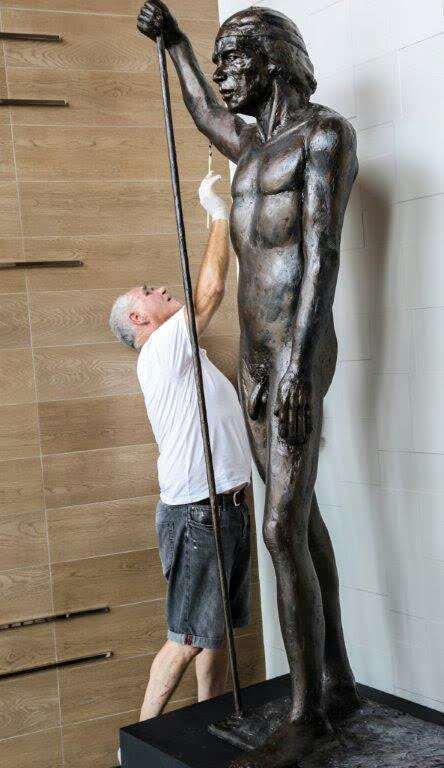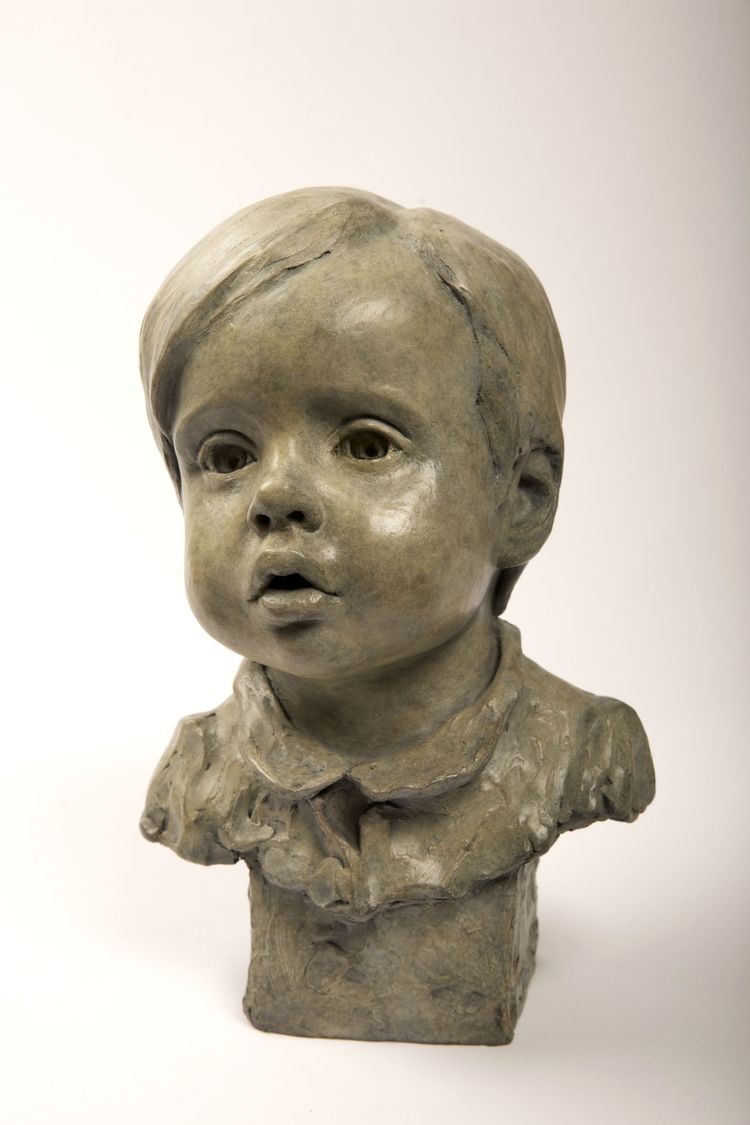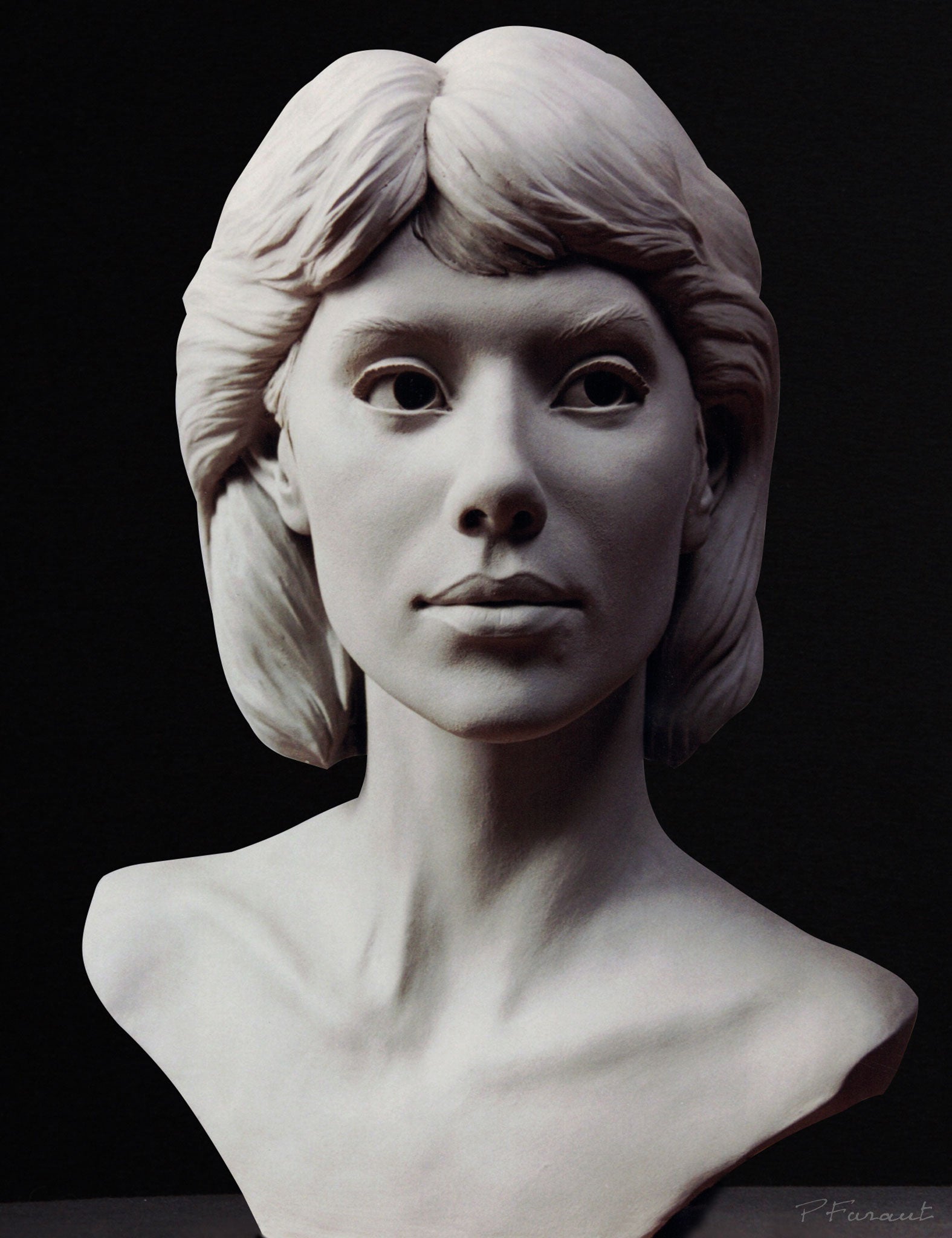Timeless Appeal in Bronze: Introducing the Art of Bronze Sculptures
Wiki Article
The Evolution of Sculptures: From Old to Modern
The Advancement of Sculptures: From Ancient to Modern. Robert C Hitchcock Sculptor.Sculpture, one of the earliest forms of art, has been an indispensable part of human civilization for millennia. From the old people of Egypt and Greece to the modern-day age, sculptures have advanced, mirroring adjustments in imaginative methods, products, and cultural influences. This journey with time traces the advancement of sculptures, exploring the changes stylishly, subject issue, and creative expression.
Starting with the old globe, sculptures crafted from rock and later on bronze caught the essence of divine beings, rulers, and day-to-day life. The Renaissance duration observed a rebirth of classical sculpting methods, as musicians looked for to replicate the graceful forms of old Greek and Roman sculptures (Portrait Sculptor). In the modern period, musicians tested typical borders, embracing abstraction and testing with brand-new products
This expedition will certainly dive right into the varied advancement of sculptures, disclosing the rich tapestry of imaginative expression across different periods and cultures.

Ancient Sculptures: From Stone to Bronze
Ancient sculptures transitioned from being sculpted out of stone to being cast in bronze. This change marked a significant evolution in the art of sculpture, permitting greater improvement and detail in the finished jobs. Stone sculptures, while impressive in their own right, were limited by the nature of the material. Rock needed extensive sculpting and forming, usually causing an extra simplified representation of the topic.The intro of bronze as a tool for sculptures brought about a change in artistic expression. Bronze offered artists the chance to develop natural and elaborate kinds that were not feasible with rock. The procedure of casting bronze enabled the development of multiple duplicates of a sculpture, making it possible for bigger circulation and preservation of these artistic work of arts.
The shift from stone to bronze likewise saw a change in the subject issue of sculptures. While stone sculptures mostly shown gods, goddesses, and mythological figures, bronze sculptures started to mirror a broader range of topics, consisting of everyday people and pets. This development of subject matter showcased the flexibility and versatility of the bronze medium.
Renaissance Revival: Shaping in the Classical Design
The Renaissance rebirth of sculpture observed a revival in the classical design, building upon the developments made throughout the shift from rock to bronze in ancient sculptures. During this duration, artists sought to recreate the classical visual and ideals of appeal that were common in ancient Greek and Roman sculptures.One of the crucial characteristics of the Renaissance revival was the emphasis on naturalism and the human form. Carvers like Donatello and Michelangelo aim to capture the physiological information and expressions of their subjects with extraordinary precision. They researched the human body and included their observations into their sculptures, resulting in practical and lifelike depictions.
One more crucial facet of the Renaissance resurgence was the expedition of viewpoint and deepness. Artists made use of strategies such as contrapposto, where the weight of the body is shifted to one side, producing a feeling of activity and dynamism. They additionally explore different materials, including marble and bronze, to achieve a degree of refinement and complexity in their sculptures.

Innovation and the Avant-Garde: Breaking Traditional Limits
Throughout the Modernism and Avant-Garde motions, artists pressed the limits of traditional creative conventions. This period, which emerged in the late 19th and early 20th centuries, saw a dramatic shift in the method musicians approached sculpture. Turning down the concept of art as mere imitation, modernist sculptors looked for to check out new types, materials, and concepts.
Among the crucial attributes of modernist sculpture was the focus on abstraction. Sculptors moved far from reasonable representations and instead concentrated on catching the essence of the topic via simplified kinds and geometric shapes. This departure from traditional representation permitted artists to reveal their emotions and concepts in a much more personal and subjective way.

Contemporary Sculptures: Checking Out New Products and Concepts
With a concentrate on exploring brand-new materials and concepts, contemporary sculptures have revolutionized the area of art. Artists today are pushing the boundaries of standard sculpture by making use of cutting-edge materials and exploring with abstract ideas. These sculptures test conventional concepts of materiality, meaning, and type, welcoming customers to take part in a thought-provoking and new creative experience.Contemporary sculptors are accepting a wide variety of materials, including plastic, glass, metal, and even organic issue. They are not restricted to the traditional medium of rock or clay, enabling greater freedom of speech and experimentation. This change in the direction of unique products has opened new possibilities for musicians to create sculptures that are dynamic, interactive, and aesthetically striking.
In enhancement to exploring new products, contemporary sculptures additionally look into facility and abstract ideas. Artists are currently checking out motifs such as identity, social issues, and the environment, making use of sculpture as an effective tool for social discourse and self-contemplation. These sculptures challenge customers to think seriously and engage with art on a much deeper level, stimulating conversations and provoking emotional actions.
Worldwide Influences: Sculptural Customs From All Over The World
Sculptural customs from various areas of the world have considerably shaped the evolution of sculptures throughout history. The international impacts on sculpture have varied and have actually added to the richness and range of artistic expressions. From the ancient civilizations of Egypt, Greece, and Rome to the complex makings of Eastern cultures, each area has created its unique sculptural customs that have actually influenced artists throughout time.In old Egypt, sculptures were created primarily for funerary and spiritual objectives. The iconic sculptures of pharaohs and gods, such as the Great Sphinx and the bust of Queen Nefertiti, showcase the Egyptians' mastery of rock carving and their idea in the immortality.

In old Rome, sculpture served both artistic and political purposes. Roman sculptures usually portrayed emperors, official source generals, and mythical numbers, mirroring the power and majesty of the realm. The marble statue of Augustus of Prima Porta and the significant Arc of Constantine are notable examples of Roman sculptural accomplishments.
Eastern sculptural traditions, particularly in India, China, and Japan, have additionally had a profound impact on the evolution of sculptures. Japanese sculptures, influenced by Buddhism, emphasize simplicity and serenity, seen in the serene statuaries of Buddha and the stylish art of bonsai.
The worldwide influences on sculpture remain to advance in the modern-day age. Artists today draw ideas from numerous sculptural customs, integrating new products, strategies, and ideas to develop provocative and innovative artworks. The fusion of different social influences has triggered a varied and vibrant sculptural landscape, reflecting the interconnectedness of our global culture. As we want to the future, it is particular that the worldwide impacts on sculpture will certainly proceed to shape and redefine this ancient art type.
Conclusion
In final thought, the development of sculptures has actually seen a change from ancient stone and bronze functions to the timeless rebirth during the Renaissance. This was adhered to by the splitting of traditional borders with modernism and the progressive activity. Today, modern sculptures check out brand-new products and ideas, while likewise drawing motivation from international sculptural customs. The trip of sculptures mirrors the ever-changing artistic expressions and cultural impacts throughout background.From the ancient human beings of Egypt and Greece to the modern-day age, sculptures have actually advanced, reflecting changes in artistic techniques, products, and social impacts.Beginning with the ancient world, sculptures crafted from rock and later on bronze recorded the essence of divine beings, rulers, and day-to-day life.Ancient sculptures transitioned from being carved out of stone to being cast in bronze. While rock sculptures primarily portrayed gods, goddesses, and mythical numbers, bronze sculptures started to show a broader array of subjects, including day-to-day individuals and animals.In conclusion, the evolution of sculptures has actually seen a shift from old stone and bronze functions to the classic revival during the Renaissance.
Report this wiki page